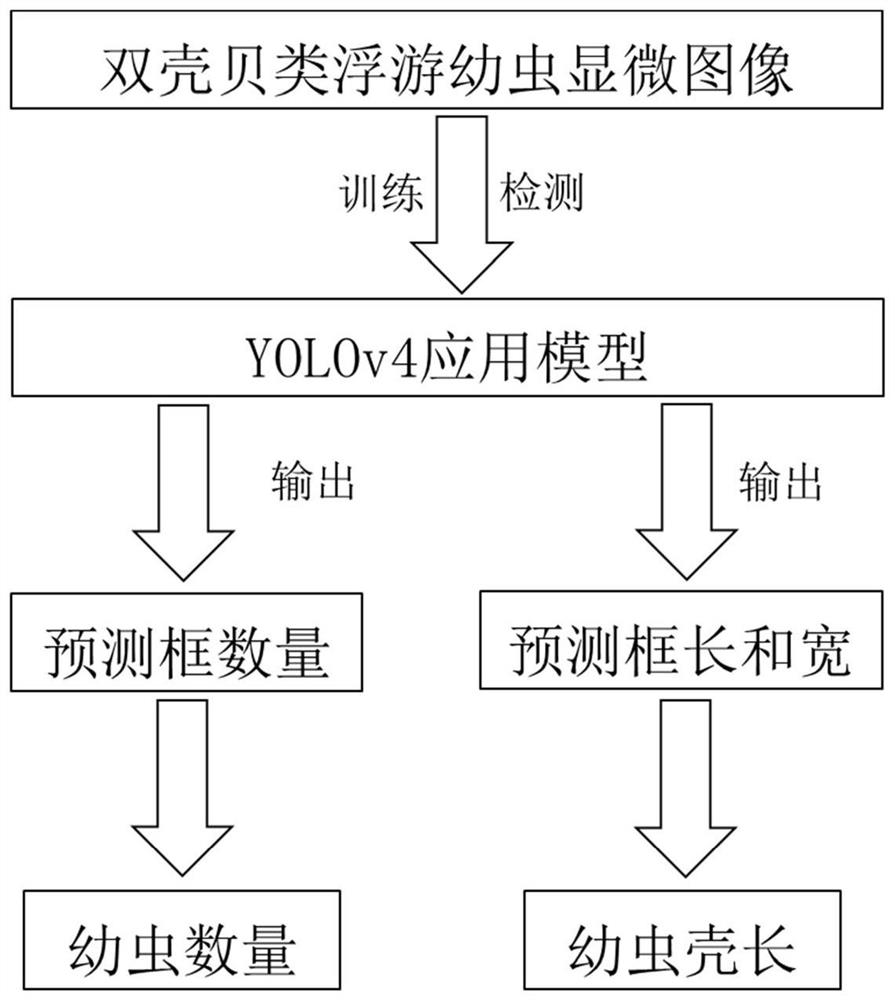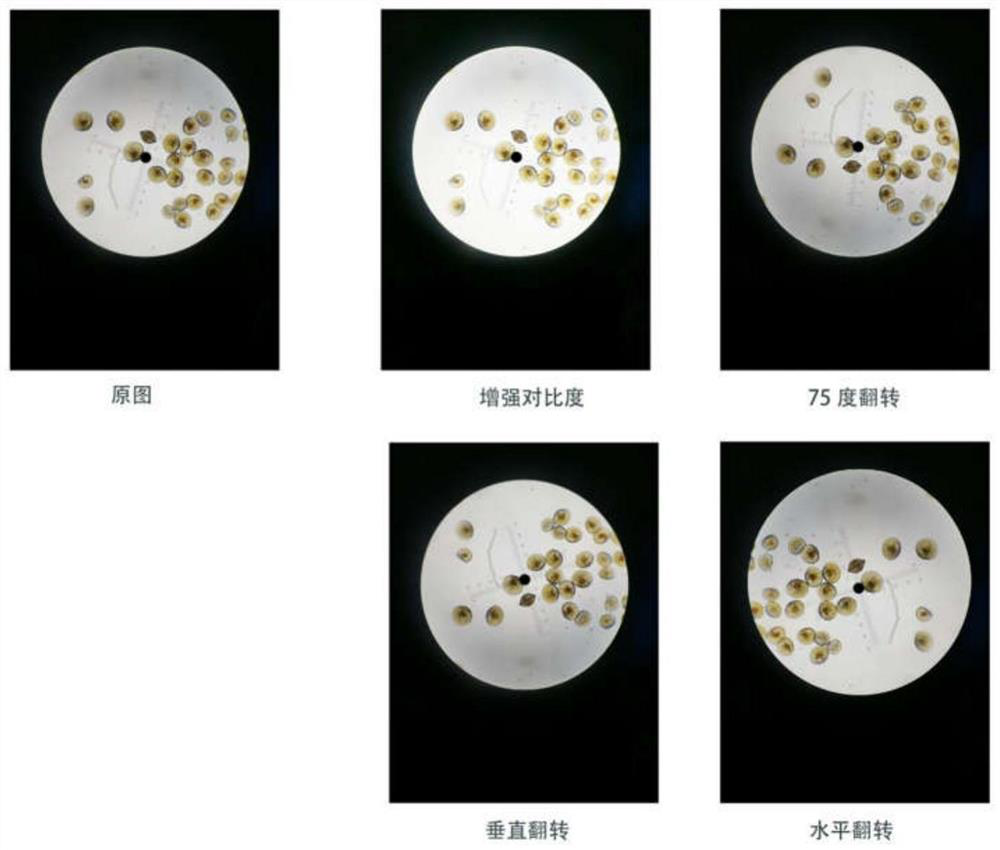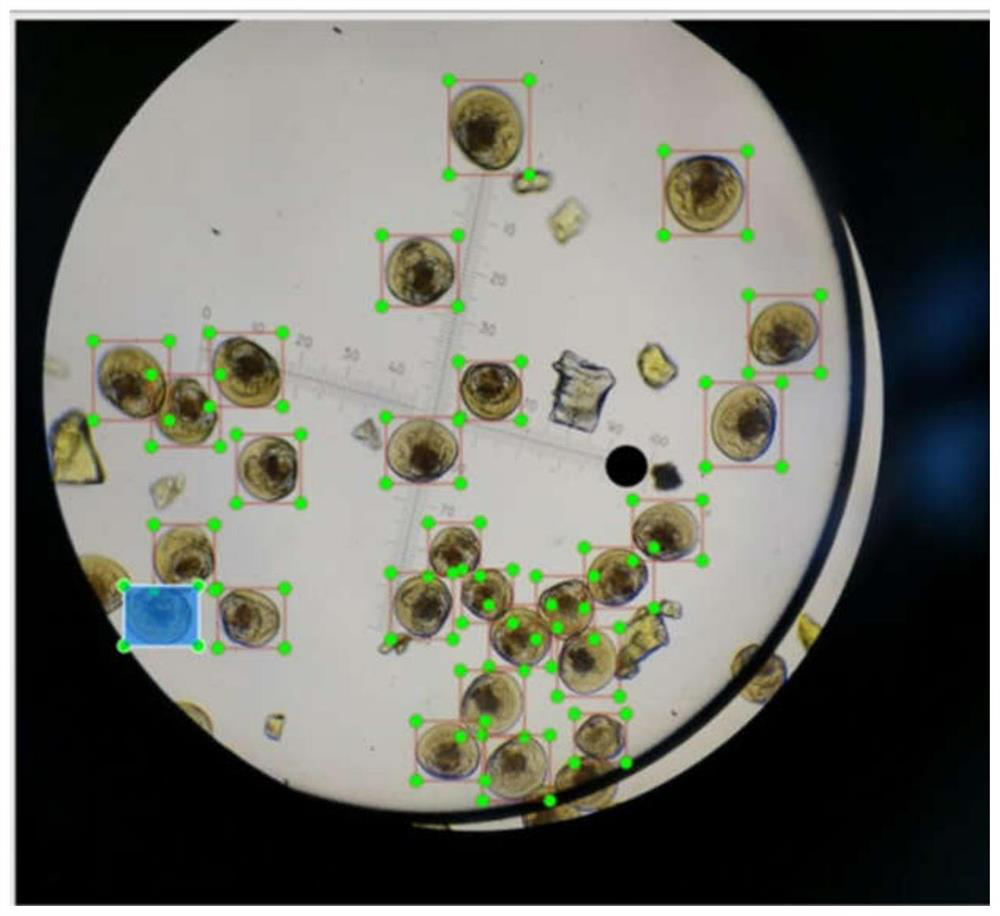Intelligent bivalve mollusk planktonic larva detection method based on deep learning
A technology for planktonic larvae and bivalve mollusks, applied in neural learning methods, image analysis, image enhancement and other directions to achieve the effect of increasing efficiency
- Summary
- Abstract
- Description
- Claims
- Application Information
AI Technical Summary
Problems solved by technology
Method used
Image
Examples
Embodiment Construction
[0031] The present invention will be further described in detail below with reference to the accompanying drawings and embodiments.
[0032] This embodiment provides a method for intelligently detecting bivalve larvae based on deep learning, such as figure 1 shown, including the following steps:
[0033] (1) Microscopic image collection of planktonic larvae of bivalve mollusks: Take the planktonic larvae of bivalve mollusks in different stages of artificial breeding and place them in the embryo dish. After identifying the species name of the larvae, add iodine tincture to anesthetize, and after the larvae sink to the bottom, put the embryo dish Placed under an optical microscope, the optical microscope has an eye micrometer, and the eye micrometer has laser-engraved dots with a diameter of 100 microns, and the microscopic images of planktonic larvae with bivalve mollusks are obtained by manual photography. The number of images should be as large as possible to better train th...
PUM
 Login to View More
Login to View More Abstract
Description
Claims
Application Information
 Login to View More
Login to View More - Generate Ideas
- Intellectual Property
- Life Sciences
- Materials
- Tech Scout
- Unparalleled Data Quality
- Higher Quality Content
- 60% Fewer Hallucinations
Browse by: Latest US Patents, China's latest patents, Technical Efficacy Thesaurus, Application Domain, Technology Topic, Popular Technical Reports.
© 2025 PatSnap. All rights reserved.Legal|Privacy policy|Modern Slavery Act Transparency Statement|Sitemap|About US| Contact US: help@patsnap.com



